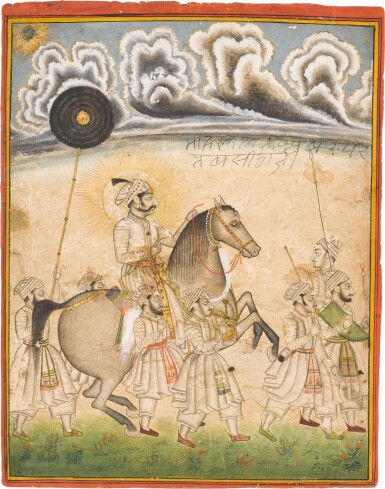Arts of the Islamic World & India
Arts of the Islamic World & India

An equestrian portrait of Maharana Amar Singh II (r.1698-1710), attributed to The Stipple Master, India, Rajasthan, Mewar, Udaipur, circa 1707-08
Auction Closed
October 25, 04:59 PM GMT
Estimate
7,000 - 10,000 GBP
Lot Details
Description
brush drawing with transparent and opaque pigments heightened with gold on paper, within black rules, narrow yellow and red borders, with inscription in black devanagari script
painting: 30.8 by 24.2cm.
Sotheby's New York, 2 June 1992, lot 140.
A. Topsfield, Court Painting at Udaipur, Zurich, 2001, p.125; footnote 72, p.139.
M.C. Beach, E. Fischer & B.N. Goswamy (eds.), Masters of Indian Painting, 1650-1900, Zurich, 2011, no.31, p.518.
Catherine Glynn has attributed this painting to the master artist known as the ‘Stipple Master’ in her article published in Beach, Fischer & Goswamy 2011, pp.515-530. The artist is known to have worked in Udaipur at the court of Maharana Amar Singh II from 1698-1710. He used a form of ‘grisaille’, or ‘painted drawing’ style for several portraits of Amar Singh, leaving the buff background uncoloured. This style of painting is an influence of earlier European engravings and was popular with Mughal and Deccani artists in the sixteenth and the seventeenth centuries.
For a list of works attributed to the Stipple Master, see ibid., pp.516-519. For similarly executed equestrian portraits of Maharana Amar Singh accompanied by attendants on foot, dated to circa 1700-08, see Topsfield 2001, pp.124-5, figs.96-98
The devanagari inscription on the present work erroneously identifies the subject as Maharana Pratap Singh.
